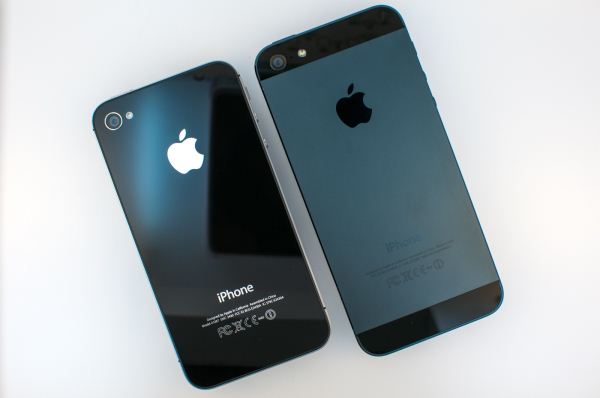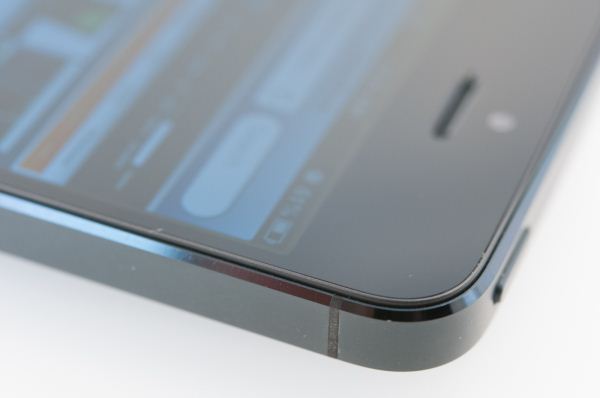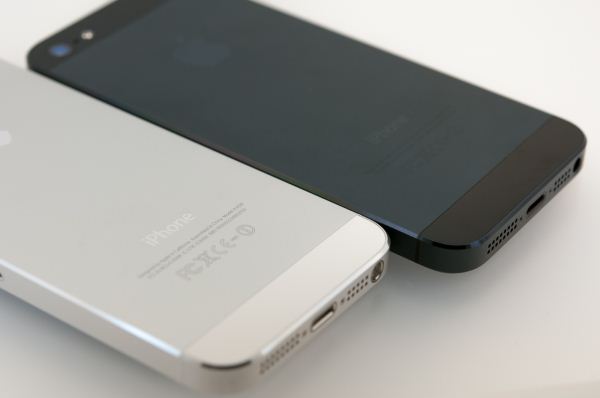The iPhone 5 Review
by Anand Lal Shimpi, Brian Klug & Vivek Gowri on October 16, 2012 11:33 AM EST- Posted in
- Smartphones
- Apple
- Mobile
- iPhone 5
Design
Section by Vivek Gowri
The iPhone 4, when it launched, represented a clean break for Apple's industrial design. It replaced the soft organic curvature of the iPhone 3G/3GS with a detailed sandwich of metal and glass, something that arguably brought the feel of a premium device to a new level. Obviously, Apple had their fair share of issues with the design initially, and nothing could match the sinking feeling of dropping one and shattering the glass on the front and back simultaneously, but it was a small price to pay for the jewel-like feel of the device. Combined with the (at the time) incredible pixel density of the then-new Retina Display, the iPhone 4 was a revolution in hardware design. The chassis has aged remarkably well over the last two-plus years, so naturally it's a hard act to follow.
The 5 keeps a similar design language to the 4, keeping roughly the same shape as before but with a taller and thinner form factor. At first glance, the 5 actually looks almost the same as the 4, with an unbroken glass front face, prominent corner radiuses, the familiar home button, a rectangular cross-section, and metallic sides with plastic antenna bands. However, those metallic sides are part of an anodized aluminum frame that makes up a majority of the body, and that's where the industrial design diverges from the 4 and 4S.
In contrast to the predominantly glass body of the previous generation iPhone, the 5 is almost entirely aluminum other than the glass front face and two small glass windows at the top and bottom of the back. It's a return to the original iPhone/3G/3GS-style of construction, with the front glass clipping into a unibody chassis. It's a significant departure from the 4 and 4S, where the stainless steel band in the center was the main housing that the front and rear panels clipped into. That was pretty radical way of doing things, so it's not all that surprising to see Apple revert to a more conventional and less complex method for the 5.
The aesthetic is actually pretty awesome, especially in the black version. The combination of black glass and off-black aluminum (Apple is calling it slate) gives the 5 an almost murdered out look that's three parts elegant and one part evil. The white and silver model has a classy look that's much friendlier in appearance than the black one. The color schemes and overall design aesthetic remind me of the Dell Adamo, one of my favorite notebook designs of all time. The similarities may be purely coincidental, but it's interesting to note nonetheless and should give you an idea of how premium the industrial design is.
All three previous iPhone body styles had very similar dimensions, so the biggest question with the 5 was how much the larger display would do to change that. Unlike many Android manufacturers, Apple still believes in things like small pockets, small hands, and one-handed smartphone usage. With the 5 being vertically stretched but no wider than the previous iPhones, the biggest impact on in-hand feel is actually the thinner body. If you're used to a larger Android or Windows device, the change seems radical, but even compared to the 22% thicker iPhone 4S, it feels a good deal smaller.
It's not just the minimized z-height though, the 25% weight loss is definitely also a factor. Even a few weeks later, I still find it striking how much less substantial it feels than the 4 and 4S. The densely-packed glass body just had a reassuring weight to it that the 5 simply lacks. But as you get used to the new form factor, you realize how far Apple is pushing the boundaries of ultrathin design. When the 4th generation iPod touch came out, I told Brian that I wanted an iPhone with that form factor - well, the 5 is essentially there (0.3mm thicker and 11 grams heavier, but close enough). It's pretty impressive to think about. If you thought the 4S was one of the best phone designs on the market in terms of aesthetics and build quality, the iPhone 5 just pushes that advantage further.



















276 Comments
View All Comments
A5 - Tuesday, October 16, 2012 - link
Double the browsing time while moving to LTE and roughly the same in everything else despite double the performance is pretty impressive.rarson - Thursday, October 18, 2012 - link
I'm pretty sure they mentioned about a million times that "this is the new paradigm blah blah blah, where if you use heavy processing power more often, the battery life will diminish faster" (I'm paraphrasing here). I'm fine with that. The iPhone 5 shows some pretty impressive battery life in light workloads and doesn't actually do all that bad in heavy workloads despite how much number crunching it's doing, even though it might actually tank the battery life down to less-than-4S levels.It's a tradeoff: you get more power or longer battery life, depending on how you use it. The article paints this as a bad thing, but I disagree; it's obviously making much more efficient use of the hardware. Because of that, I definitely think the battery life overall is better, even though sometimes it might be worse. And you're still getting a lot more number crunching for the watts used.
Center - Tuesday, October 16, 2012 - link
In the intro, the screen specs on the iphone 5 is listed as 1136x960.. should be 1136x640.But great article as always, Anandtech!
Krysto - Tuesday, October 16, 2012 - link
I hope we'll see the same kind of thorough review of Samsung's Exynos 5 Dual chip, Anand.ltcommanderdata - Tuesday, October 16, 2012 - link
Isn't TI supposed to become the first shipping Cortex A15 SoC? I expect Anandtech to thoroughly review the first Cortex A15 SoC. There shouldn't be a need to go into the same detail (on the CPU side) for every subsequent one unless preliminary tests show something significantly different.Kidster3001 - Monday, October 22, 2012 - link
Samsung and Qualcomm do not ship generic ARM chips. They purchase licenses to use the ARM instruction set, not the chip design. Their chips are highly customized and perform differently.Using your logic to just review the first A15 class chip and consider the rest to be comparable is similar to just reviewing the first new car to be released every year and assume the rest will be comparable.
btw, TI is getting out of the business. I doubt they will ship first, or ever.
A5 - Tuesday, October 16, 2012 - link
Considering the fact that Krait got several articles here, I'd imagine that whatever the first shipping A15 chip is will get significant coverage.Wurzelsepp - Tuesday, October 16, 2012 - link
Great review, you really have to give Apple credit for building an amazing SoC.It's interesting to see how well the Adreno competes with SGX-543MP3, the new Nexus 4 with this GPU is going to be amazing.
Krysto - Tuesday, October 16, 2012 - link
One thing both the iPhone and the Intel Atom processors will keep lacking for a year from now, will be OpenGL ES 3.0 support. Apple might bring it to the new iPad 4 this spring, but the iPhone won't have it until the next iPhone, in the fall of 2013, obviously. Same with Intel, they won't be supporting it at least until end of 2013.In the meantime both Adreno 320 and Mali T604 are supporting it, and will come out this fall.
darwinosx - Tuesday, October 16, 2012 - link
A year from now and something 'coming out this fall". Right.